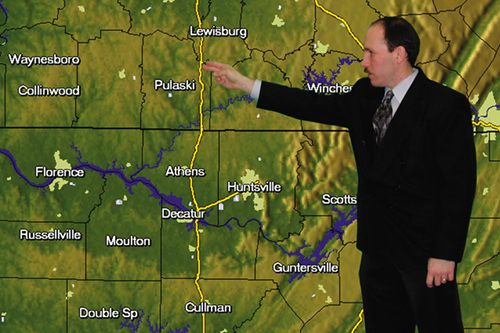Forecasting Weather With a Wave of the Hand
Originating Technology/ NASA Contribution
Cybernet Systems Corporation, of Ann Arbor, Michigan, originally developed its gesture recognition technology for the U.S. Department of Defense. A 1997 Phase II Small Business Innovation Research (SBIR) contract with NASA’s Johnson Space Center also contributed to the development of the company’s gesture recognition and tracking system, which observes human hand motions and interprets gestures in order to control devices.
Partnership
Cybernet responded to NASA’s request for an educational outreach device that would capture children’s attention without the need for a keyboard or mouse. By integrating its gesture recognition technology with NASA’s Virtual Astronaut software, the company created a gesture-controlled space station kiosk for Johnson’s Bioastronautics Exhibit. Giving the public a chance to explore the International Space Station without leaving Earth, the kiosk enabled visitors to lead their own virtual space station tours, as they moved throughout the station’s interior using hand gestures. Visitors could point a finger, move a hand, or open and close a fist to manipulate doors and viewports or request more information.
Johnson’s Space and Life Sciences Directorate designed the exhibit to help the public understand the purpose of NASA’s mission and how it relates to life on Earth. The gesture recognition technology added a futuristic feel to the kiosk, while adding practical benefits. Since visitors did not have to touch anything to interact with the virtual space station, dirty computer screens and broken parts were not a concern. The kiosk demonstrated that gesture recognition technology can provide a viable alternative to physical contact or remote controls for sending commands to devices.
Product Outcome
Building upon its successful collaboration with NASA, Cybernet introduced GestureStorm,™ a weather map management system that utilizes both body tracking and gesture recognition technology for televised weather reports. The GestureStorm software interface enables meteorologists to control the computerized visual effects on weather maps using hand gestures and body movements. Prior to this, meteorologists prepared scripted on-air reports to coincide with the timing of graphics on the computerized maps. They knew when and where weather and Doppler radar maps would appear on the monitor, but could not react in real time.
Cybernet’s new product frees forecasters from a script, enabling them to directly interact with the weather picture in real time, significantly reducing the preparation time for the broadcast. With this technology, meteorologists control the pace of the visuals and can incorporate spontaneous close-ups with simple hand movements. In cases of severe weather, meteorologists strive to report new information as quickly as possible. GestureStorm gives forecasters an edge as they track late-breaking storms. The reduced preparation and real-time interaction shave critical minutes from the time required to broadcast severe weather warnings.
The first deployment of GestureStorm was at WKMG TV, a CBS-affiliate station in Orlando, Florida. The system is exclusively provided by Baron Services, Inc., of Huntsville, Alabama. GestureStorm interfaces with Baron Services’ storm tracking and forecasting products, including FasTrac,® NexTrac,® and VIPIR.® By interpreting simple hand motions to facilitate Baron’s products, GestureStorm provides an effective alternative to the traditional methodology for producing on-air weather spots.
GestureStorm™ is a trademark of Cybernet Systems Corporation.
FasTrac,® NexTrac,® and VIPIR® are registered trademarks of Baron Services, Inc.

GestureStorm™ enables a meteorologist to interact with a weather map in real time for televised broadcasts.













